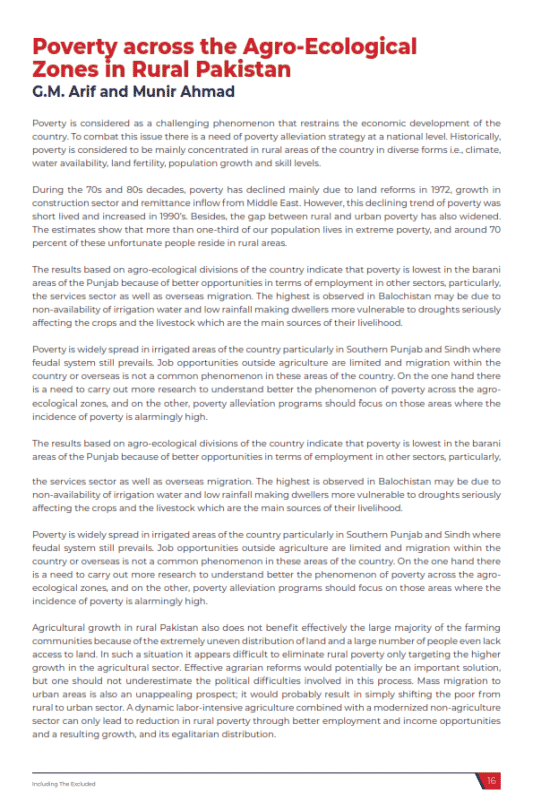
Pakistan Institute of Development Economics
- Home
Our Portals
MenuMenuMenuMenuMenuMenuMenu - ResearchMenuMenuMenuMenuMenuMenuMenu
- Discourse
- The PDR
- Our Researchers
- Academics
- Degree Verification
- Thesis Portal
- Our Portals
Poverty across the Agro-Ecological Zones in Rural Pakistan
Poverty is considered as a challenging phenomenon that restrains the economic development of the country. To combat this issue there is a need of poverty alleviation strategy at a national level. Historically, poverty is considered to be mainly concentrated in rural areas of the country in diverse forms i.e., climate, water availability, land fertility, population growth and skill levels. During the 70s and 80s decades, poverty has declined mainly due to land reforms in 1972, growth in construction sector and remittance inflow from Middle East. However, this declining trend of poverty was short lived and increased in 1990’s. Besides, the gap between rural and urban poverty has also widened. The estimates show that more than one-third of our population lives in extreme poverty, and around 70 percent of these unfortunate people reside in rural areas. The results based on agro-ecological divisions of the country indicate that poverty is lowest in the barani areas of the Punjab because of better opportunities in terms of employment in other sectors, particularly, the services sector as well as overseas migration. The highest is observed in Balochistan may be due to non-availability of irrigation water and low rainfall making dwellers more vulnerable to droughts seriously affecting the crops and the livestock which are the main sources of their livelihood.



